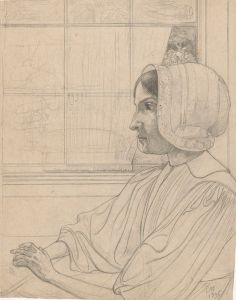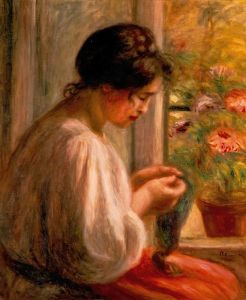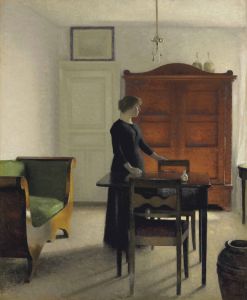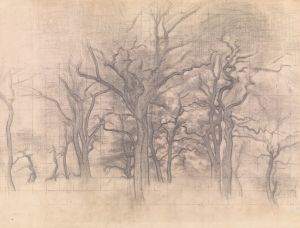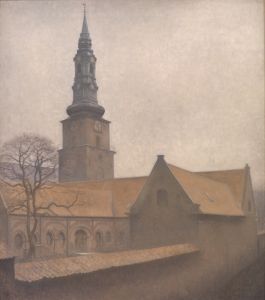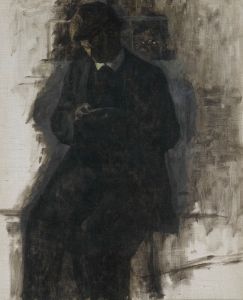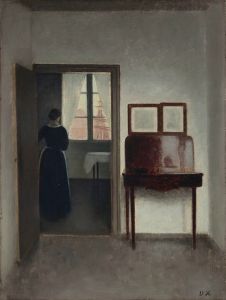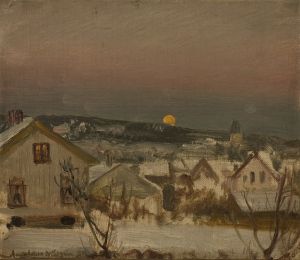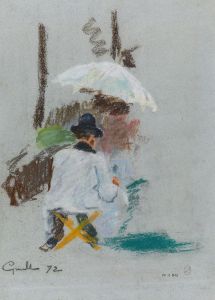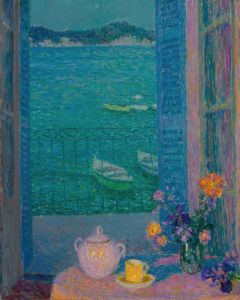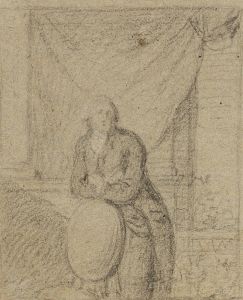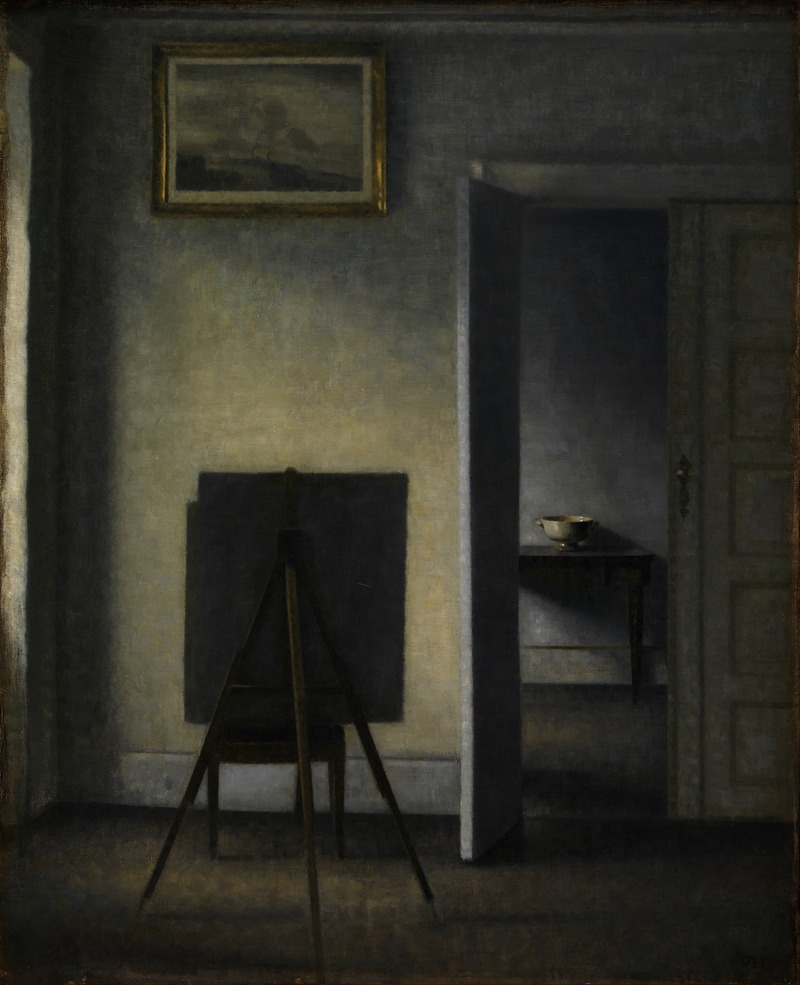
Interior with the Artist’s Easel
A hand-painted replica of Vilhelm Hammershøi’s masterpiece Interior with the Artist’s Easel, meticulously crafted by professional artists to capture the true essence of the original. Each piece is created with museum-quality canvas and rare mineral pigments, carefully painted by experienced artists with delicate brushstrokes and rich, layered colors to perfectly recreate the texture of the original artwork. Unlike machine-printed reproductions, this hand-painted version brings the painting to life, infused with the artist’s emotions and skill in every stroke. Whether for personal collection or home decoration, it instantly elevates the artistic atmosphere of any space.
Vilhelm Hammershøi's painting Interior with the Artist’s Easel is a work by the renowned Danish artist, known for his distinctive style of subdued color palettes and quiet, introspective interiors. Hammershøi (1864–1916) was a leading figure in Danish art during the late 19th and early 20th centuries, and his works often depict serene, sparsely furnished rooms, frequently featuring soft light and a sense of stillness.
This particular painting, Interior with the Artist’s Easel, is believed to have been created during the early 20th century, a period when Hammershøi was producing many of his iconic interior scenes. The artwork portrays a room with an easel, likely the artist's own, placed in a simple, uncluttered space. The composition reflects Hammershøi's characteristic focus on geometry, light, and atmosphere. The muted tones and careful attention to detail exemplify his mastery of creating a contemplative mood.
Hammershøi often painted the interiors of his own home in Copenhagen, particularly the apartment he shared with his wife, Ida, at Strandgade 30. Many of his works feature recurring elements such as doors, windows, and furniture, arranged in a way that emphasizes spatial relationships and the play of light. While it is not confirmed whether Interior with the Artist’s Easel depicts a specific room in his residence, the setting aligns with the aesthetic and themes found in his other interior paintings.
The painting does not include human figures, a common feature in many of Hammershøi's works. This absence contributes to the sense of quiet and introspection that defines much of his art. The easel, as the focal point of the composition, may serve as a subtle nod to the artist's own presence and creative process, though Hammershøi rarely included overt autobiographical elements in his work.
Hammershøi's art was influenced by Dutch Golden Age painters such as Johannes Vermeer, as well as by the Symbolist movement. His unique approach to interior scenes has earned him recognition as one of Denmark's most celebrated artists. Today, his works are held in high regard and are featured in major museum collections, including the National Gallery of Denmark and international institutions.
While specific details about the creation and history of Interior with the Artist’s Easel are limited, the painting remains an exemplary piece within Hammershøi's oeuvre, showcasing his ability to transform ordinary spaces into meditative works of art.





